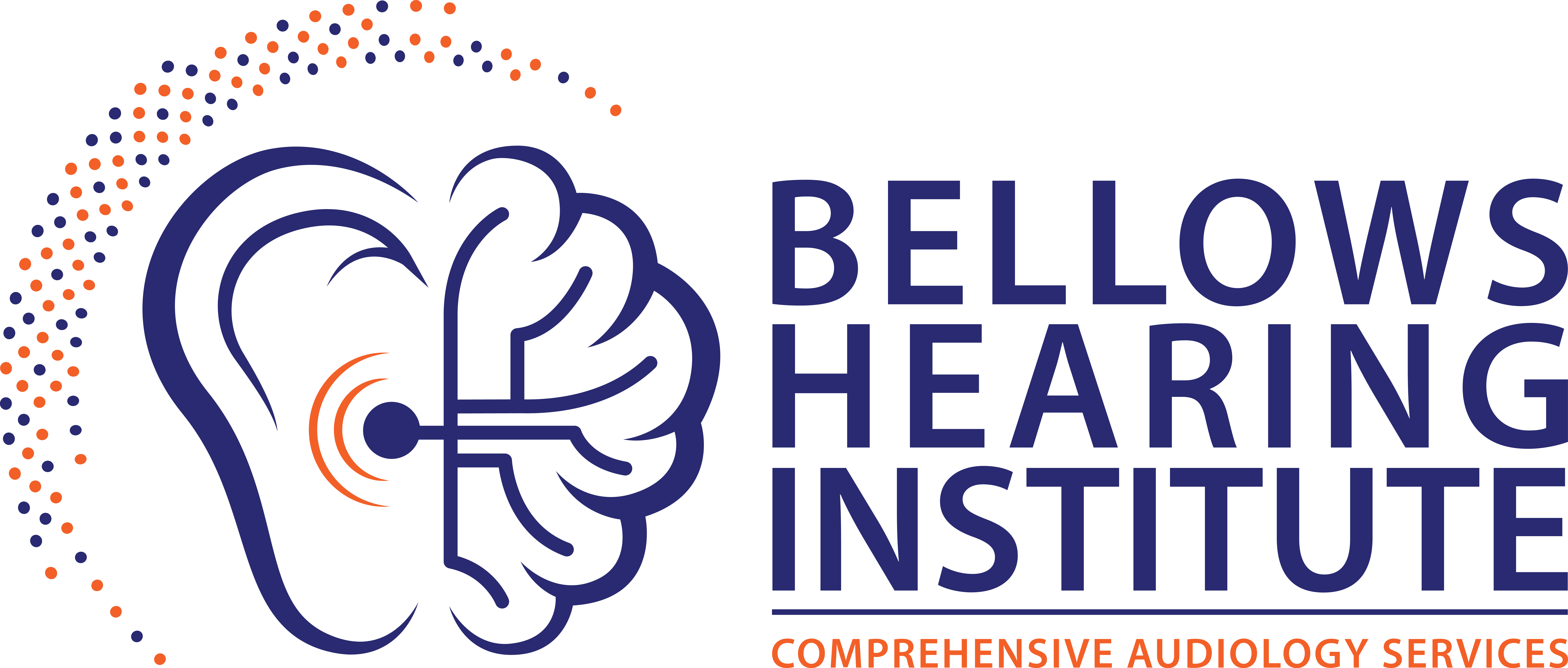Hearing tests are important diagnostic tools, that provide insights into your hearing health. Yet, understanding what all the numbers and symbols mean can feel like deciphering a cryptic code. In this guide, we explain how to read your hearing test results and interpret an audiogram so you can continue to make informed decisions about your hearing health.
How to Read an Audiogram
An audiogram is a comprehensive visual representation of your hearing, presented on a graph. Understanding how to read an audiogram is vital for gaining insights into the state of your hearing health.
Audiogram Graph

You can think of an audiogram graph as a blueprint of your hearing capabilities. It visually displays your hearing sensitivity across different sound intensity levels (loudness) and frequencies (pitches), providing a snapshot of your hearing capabilities and any potential hearing loss.
Y-Axis: Sound Intensity Levels

Sound intensity is measured in decibels (dB) and indicates the loudness of a sound. The Y-axis (vertical) on the audiogram graph represents this scale, ranging from -10 dB HL (very soft sounds) to 110 dB HL (extremely loud sounds).
In other words, quieter sounds have lower intensity values (e.g., a whisper), while louder sounds have higher intensity values (e.g., a music concert). Therefore, the y-axis on and audiogram represents how loud a sound must be for you to hear it.
X-Axis: Sound Frequency

Sound frequency refers to how rapidly a sound wave vibrates and is closely related to how we perceive the pitch of a sound. High-frequency sounds, such as bird chirping, have fast vibrations, while low-frequency sounds, like a bass drum, have slower vibrations.
The X-axis (horizontal) on an audiogram displays the range of sound frequencies, typically spanning from 125 Hz (low-pitched sounds) to 8000 Hz (high-pitched sounds). Different sound intensity levels are tested at specific frequencies during your hearing test to determine your overall hearing health.
Why Audiogram Graphs Are Upside-Down
Unlike a traditional graph, the numbers on the Y-axis (vertical) on an audiogram start larger near the bottom (louder dB) and become smaller near the top of the graph (softer dB). While this can make it seem like your audiogram graph is upside-down at first, this orientation actually aligns with the way we perceive sounds in the real world.
Numerically higher points on the Y-axis mean sounds need to be louder for you to hear them. In other words, the lower a marker is along the Y-axis of an audiogram, the worse your hearing ability is. Meanwhile, higher markers along the Y-axis indicate you can hear softer sounds and have healthier hearing capabilities.
Hearing Thresholds

Hearing thresholds represent the softest sounds that you can hear at different frequencies. These thresholds are measured in decibels (dB) and show the minimum sound intensity needed for you to hear a specific sound frequency. To determine your hearing thresholds, a hearing specialist uses two important tests: air conduction and bone conduction.
Air Conduction Thresholds
Your air conduction threshold refers to how well you hear sounds moving through the air, which is the typical way we hear sounds in our daily lives. During air conduction testing, a hearing specialist plays sounds of various frequencies and volumes through headphones, instructing you to indicate when you can hear them.
Determining your air conduction thresholds helps identify the presence and degree of hearing loss ranging from:
- Healthy (no hearing loss detected)
- Mild
- Moderate
- Severe
- Profound
Bone Conduction Thresholds
Bone conduction testing evaluates the sensitivity of your inner ear and assesses the function of your auditory nerve. During this portion of the test, your hearing care specialist uses a bone conduction tool (oscillator) to transmit gentle vibrations, acting as sound waves, directly to your auditory nerve.
By bypassing the outer and middle ear, your bone conduction thresholds will help determine the type of hearing loss you have, which can include:
- Sensorineural Hearing Loss: stemming from issues in the inner ear and/or auditory nerve
- Conductive Hearing Loss: stemming from problems in the outer and/or middle ear
- Mixed Hearing Loss: a combination of both
Air-Bone Gap

An air-bone gap (ABG) is a difference in how well you hear sounds through the air (air conduction threshold) compared to how well you hear them through vibrations (bone conduction threshold). In other words, comparing the results of your air conduction test and your bone conduction test determines the presence of an air-bone gap. People with conductive or mixed hearing loss commonly exhibit significant differences in these two tests, indicating an air-bone gap.
Unmasked and Masked Conduction Testing
In hearing tests, “masked” and “unmasked” refer to specific testing techniques used to ensure accurate hearing threshold measurements:
- Unmasked Conduction – This is the standard method used for both air conduction and bone conduction testing and is performed on each ear individually.
- Masked Conduction Testing – This technique is used when it’s necessary to assess one ear’s hearing without the other ear picking up sounds. A “masker” device generates noise in the non-tested ear to prevent it from hearing test sounds. This ensures that the responses only come from the ear being tested specifically.
Audiogram Symbols
On an audiogram, hearing thresholds are depicted as symbols plotted at specific points on the graph, corresponding to the dB levels at which those soft sounds become audible to you. To further differentiate the results of your left ear from your right ear, these symbols are often depicted as a specific color as well:
– Red audiogram symbols typically indicate the right ear
– Blue audiogram symbols typically indicate the left ear
The most common symbols on an audiogram graph are:
| O | Unmasked air conduction thresholds of your right ear |
| X | Unmasked air conduction thresholds of your left ear |
| Δ | Masked air conduction thresholds of your right ear |
| [] | Masked air conduction thresholds of your left ear |
| < | Unmasked bone conduction thresholds of your right ear |
| > | Unmasked bone conduction thresholds of your left ear |
| [ | Masked bone conduction thresholds of your right ear |
| ] | Masked bone conduction thresholds of your left ear |
What Your Hearing Test Results Mean
Hearing tests go far beyond simply detecting if you have hearing loss. Audiograms also provide valuable insights into your level of hearing loss, and the type. Below, we break down what your hearing test results mean and what they typically look like on an audiogram.
Level of Hearing Loss

Where threshold symbols (X, >, etc.) are placed on an audiogram indicates your level of hearing loss. As we explained earlier, lower symbols along the Y-axis indicate more extreme degrees of hearing loss, while symbols higher up on the Y-axis represent healthier hearing. Below, we explain exactly what each level of hearing loss looks like on an audiogram:
Healthy Hearing: -10 dBHL – 14 dBHL
Thresholds that fall within the range of -10 dB to 14 dB on an audiogram graph indicate a healthy hearing level for those frequencies. Being able to hear these soft sounds indicates you do not have any hearing loss.
Slight Hearing Loss: 15 dBHL – 25 dBHL
Thresholds between 15 dB and 25 dB suggest slight hearing loss. While you may have some difficulty hearing very quiet sounds, your hearing is generally good.
Mild Hearing Loss: 26 dBHL – 40 dBHL
Thresholds between 26 dB and 40 dB suggest mild hearing loss. If you have mild hearing loss, you may have some difficulty hearing softer sounds, particularly in environments with a lot of background noise.
Moderate Hearing Loss: 41 dBHL – 55 dBHL
Thresholds between 41 dB and 55 dB indicate moderate hearing loss. Communication difficulties become increasingly common at this level, and you likely need people to repeat themselves frequently.
Moderately-Severe Hearing Loss: 56 dBHL – 70 dBHL
Hearing thresholds from 56 dBHL to 70 dBHL represent moderately-severe hearing loss, often resulting in substantial communication difficulties.
Severe Hearing Loss: 71 dBHL – 90 dBHL
Thresholds between 71 dB and 90 dB suggest severe hearing loss. It is common for many people to struggle to hear even loud speech or everyday sounds with this level of loss.
Profound Hearing Loss: 91+ dBHL
Hearing thresholds exceeding 91 dB on an audiogram graph indicate profound hearing loss. At this level of loss, you may have little to no hearing without the use of hearing aids.
Type of Hearing Loss
An audiogram represents different types of hearing loss by displaying specific patterns of threshold shifts and air-bone gaps. Below, we illustrate how each type of hearing loss is typically displayed on an audiogram:
Sensorineural Hearing Loss

Sensorineural hearing loss is the most common type of hearing loss and is caused by issues related to your inner ear and/or your auditory nerve. On an audiogram, sensorineural hearing loss typically displays elevated threshold levels for both air conduction (X) and bone conduction (>), with minimal or no air-bone gap present.
Conductive Hearing Loss

Conductive hearing loss occurs when there are problems in your outer and/or middle ear that interfere with the transmission of sound to your inner ear. If you have conductive hearing loss, your audiogram will typically display numerically higher air conduction thresholds (X) compared to what healthy hearing would indicate.
As a result, an air-bone gap is also a notable feature of hearing test results for people with conductive hearing loss.
Mixed Hearing Loss

As the name suggests, mixed hearing loss is a combination of both conductive hearing loss and sensorineural hearing loss. This means that there are issues affecting both your outer or middle ear (conductive component) and your inner ear or auditory nerve (sensorineural component).
On an audiogram, mixed hearing loss typically shows a combination of elevated threshold levels for air conduction (X) and bone conduction (]), along with an air-bone gap.
Schedule a Hearing Test at Bellows Hearing Institute Today
Understanding your hearing test results is the first step towards a better quality of life. If you suspect hearing loss or haven’t had a hearing test in over a year, don’t hesitate to schedule one at Bellows Hearing Institute. Our experienced hearing specialists will walk you through the entire hearing test process, including reviewing and explaining your results and answering any questions you have. We provide the highest degree of care and want to help you find the best hearing loss solution for your needs, lifestyle, and budget.
Don’t let hearing loss impact your quality of life; contact us today to schedule a hearing test.

